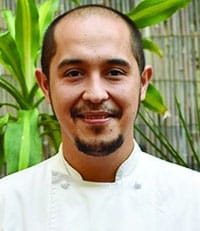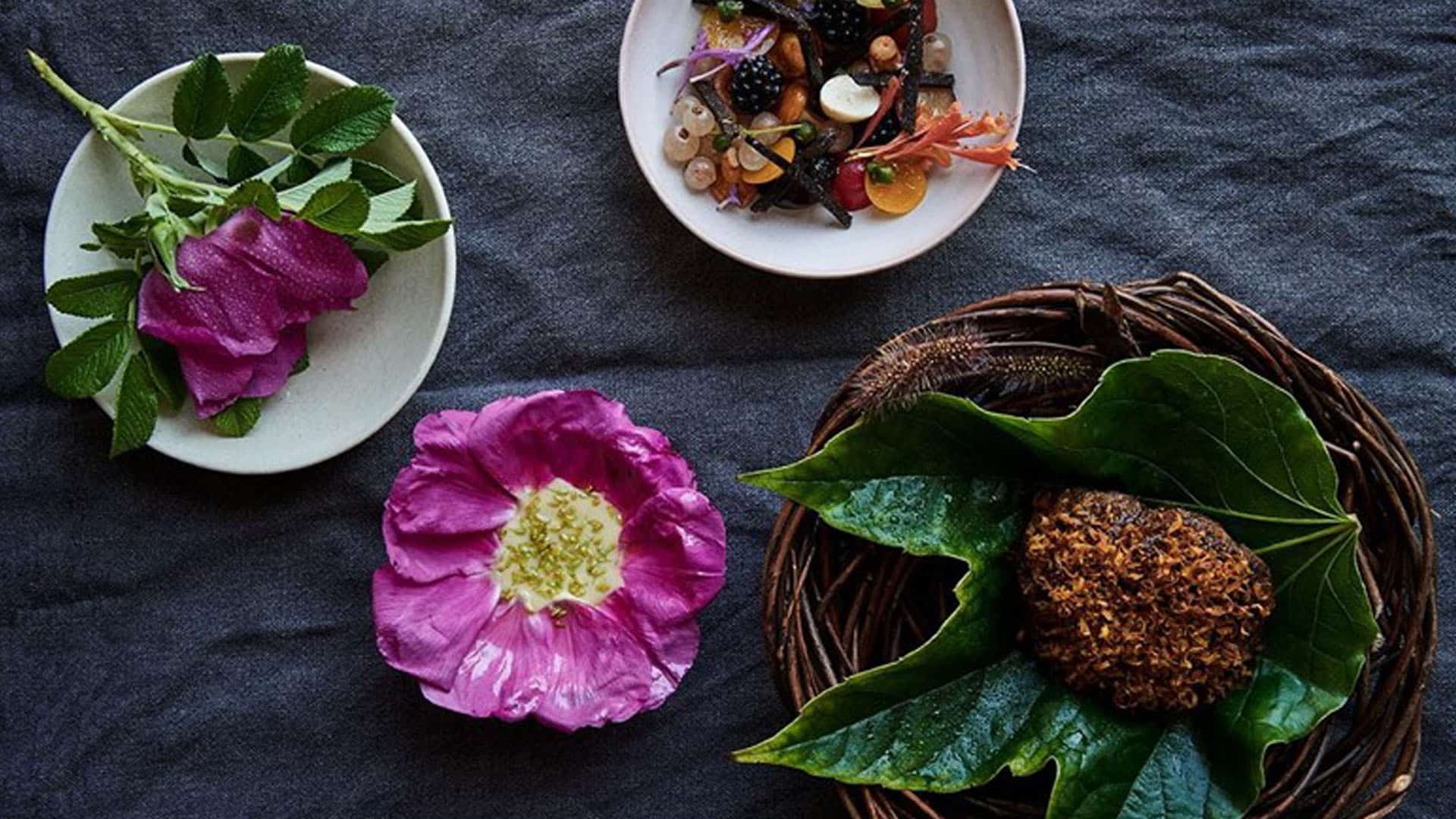
French Technique Meets Mediterranean Influence: Inside the Kitchen of Risette’s Chef Steve Scicluna
April 13, 2023
Casa Ellul: Where Traditional Maltese Charm Meets Modern Luxury
April 15, 2023Mushrooms and fungi have been roaming the earth for millennia, transforming everything around us.
They turn rocks into soil, they helped algae to live on land giving us the first plants and even today fungi are our main source of antibiotics, it just seems to be that fungi rule every aspect of our lives.
It’s very important to note that mushrooms fall under three separate groups, at least in relation to food, there’s Macro fungi, the ones which create fruiting bodies (mushrooms) that we eat, Micro fungi or mould, equally if not more important in the world of food, and fungal protists, single cell fungi that we consume unknowingly every single day.
Mushrooms are the fruit of the fungus, and like other fruit mushrooms are created to spread their seed, in this case spores, the spores then connect to create mycelium, the real mushroom, which lives amongst leaf litter, underground, in trees or even faeces, amongst other substrates. It’s good to note that research into culinary uses of mycelium from macro fungi is ongoing. Once the mycelium is established, this could take anywhere between two days and twenty years, and the growing conditions just right, and I mean perfect, the mushroom will form, and that’s what makes wild and hyper gourmet mushrooms such rare, expensive and sought-after ingredients.
Also like fruit, a mushroom is best when fully ripe, underripe mushrooms don’t have much flavour while older mushrooms can have an undesirable flavour, sour or bitter taste and a woody texture, after all mushrooms are made up of chitin, the same chemical insect and crustacean exoskeletons are made of. Ripeness is species dependant, so knowledge on each variety is a must, with agaricus peak ripeness happens when it reaches 15cm in diameter, stropharia and shiitake it’s when the veil breaks, oysters and chanterelles are best when the ‘caps’ start growing upwards with no curls round the edges, with other mushrooms, especially truffles, smelling for ripeness is enough.
Cooking mushrooms well is the key to unlocking their full potential, a medium, dry heat, not exceeding 120 Celsius, for a lengthy period works best. Some chitin will slowly break down, air pockets trapped between the structures escape, water evaporates intensifying the flavour compounds, and enzymatic reactions peak causing even more compounds to be created. Chitin isn’t water soluble so the structure of most mushrooms stays intact, with the exception of jelly ears, whose structure is mostly made from soluble carbohydrates.
Truffles, especially the white ones shouldn’t be cooked, their compounds are very volatile and disappear once heated, thanks to one of its main compounds, allyl methyl sulphide, the same chemical found in onions and garlic that causes the “burning” sensation that disappears once cooked. Black truffles contain various alcohol, aldehyde and some sulfuric compounds meaning their flavour can be brought out in both alcohols and fats at low temperatures. One important chemical stands out, androstenone, a steroid that few humans can smell but is entirely revolting if one does.
Fresh truffles contain over two hundred flavour compounds and are vastly complex in their flavour, while truffle oils and pastes are flavoured synthetically with only one or two compounds, if you check the label you’ll often see dimethyl sulphide or DMDS written as ingredients.
Honey truffles contain maltose and gluconic acids and so do armillaria, giving them the flavour of pure honey, and have even been used in desserts. Cutting mushrooms creates flavour producing enzymes, especially around the cap area, giving them a meaty flavour thanks to a chemical called octenol, while shiitake mushrooms create a very unique even ‘meatier’ compound. Mushrooms have very diverse flavour profiles ranging from rotten meat, watermelon rind, right to benzaldehyde, the bitter almond flavour.
It’s this combination of different protein like structures and varied flavour compounds that gives Chefs the ability to replace fish and meat on their menus, as both a more sustainable and vegetarian friendly option. A few fungi, like truffles, chanterelles and porcini find their way to the tables of every MICHELIN star in the world, while others like the lion’s mane mushroom are only now gaining notoriety. This mushroom has a crab like flavour and texture, and recently even featured on Noma’s menu. Stuffed morels are becoming far more common on the menus of three-starred Chefs, and meat replacement fungi like the beefsteak fungus are becoming even more sought after.
The sad thing is that even with all the advances in technology only a few saprotrophic varieties can be farmed efficiently, and even then, it’s difficult, conditions need to be perfect and the air they’re grown in has to be cleaner than that of a hospital due to their high chances of contamination which hinders growth. While most still need to be foraged or farmed outside. It’s no wonder Chefs and foodies all over the globe are willing to pay vast sums of money for them, even attending auctions to pick the very best. And if you’re wondering, it is absolutely fine to wash your mushrooms, just use cold running water and a delicate mushroom brush. Mushrooms are basically ninety percent water a little more won’t hurt.

Keith Abela
Keith Abela is a forager, product developer and local food consultant. Who spends all of his time researching the delicious, rare and unique ingredients Maltese nature has to offer. He has a particular interest in multisensory flavour perception and all things fungus.
Click here to see Horeca Issue 11 online
Mushrooms are the fruit of the fungus, and like other fruit mushrooms are created to spread their seed, in this case spores, the spores then connect to create mycelium, the real mushroom, which lives amongst leaf litter, underground, in trees or even faeces, amongst other substrates. It’s good to note that research into culinary uses of mycelium from macro fungi is ongoing. Once the mycelium is established, this could take anywhere between two days and twenty years, and the growing conditions just right, and I mean perfect, the mushroom will form, and that’s what makes wild and hyper gourmet mushrooms such rare, expensive and sought-after ingredients.
Also like fruit, a mushroom is best when fully ripe, underripe mushrooms don’t have much flavour while older mushrooms can have an undesirable flavour, sour or bitter taste and a woody texture, after all mushrooms are made up of chitin, the same chemical insect and crustacean exoskeletons are made of. Ripeness is species dependant, so knowledge on each variety is a must, with agaricus peak ripeness happens when it reaches 15cm in diameter, stropharia and shiitake it’s when the veil breaks, oysters and chanterelles are best when the ‘caps’ start growing upwards with no curls round the edges, with other mushrooms, especially truffles, smelling for ripeness is enough.
Cooking mushrooms well is the key to unlocking their full potential, a medium, dry heat, not exceeding 120 Celsius, for a lengthy period works best. Some chitin will slowly break down, air pockets trapped between the structures escape, water evaporates intensifying the flavour compounds, and enzymatic reactions peak causing even more compounds to be created. Chitin isn’t water soluble so the structure of most mushrooms stays intact, with the exception of jelly ears, whose structure is mostly made from soluble carbohydrates.
Truffles, especially the white ones shouldn’t be cooked, their compounds are very volatile and disappear once heated, thanks to one of its main compounds, allyl methyl sulphide, the same chemical found in onions and garlic that causes the “burning” sensation that disappears once cooked. Black truffles contain various alcohol, aldehyde and some sulfuric compounds meaning their flavour can be brought out in both alcohols and fats at low temperatures. One important chemical stands out, androstenone, a steroid that few humans can smell but is entirely revolting if one does.
Fresh truffles contain over two hundred flavour compounds and are vastly complex in their flavour, while truffle oils and pastes are flavoured synthetically with only one or two compounds, if you check the label you’ll often see dimethyl sulphide or DMDS written as ingredients.
Honey truffles contain maltose and gluconic acids and so do armillaria, giving them the flavour of pure honey, and have even been used in desserts. Cutting mushrooms creates flavour producing enzymes, especially around the cap area, giving them a meaty flavour thanks to a chemical called octenol, while shiitake mushrooms create a very unique even ‘meatier’ compound. Mushrooms have very diverse flavour profiles ranging from rotten meat, watermelon rind, right to benzaldehyde, the bitter almond flavour.
It’s this combination of different protein like structures and varied flavour compounds that gives Chefs the ability to replace fish and meat on their menus, as both a more sustainable and vegetarian friendly option. A few fungi, like truffles, chanterelles and porcini find their way to the tables of every MICHELIN star in the world, while others like the lion’s mane mushroom are only now gaining notoriety. This mushroom has a crab like flavour and texture, and recently even featured on Noma’s menu. Stuffed morels are becoming far more common on the menus of three-starred Chefs, and meat replacement fungi like the beefsteak fungus are becoming even more sought after.
The sad thing is that even with all the advances in technology only a few saprotrophic varieties can be farmed efficiently, and even then, it’s difficult, conditions need to be perfect and the air they’re grown in has to be cleaner than that of a hospital due to their high chances of contamination which hinders growth. While most still need to be foraged or farmed outside. It’s no wonder Chefs and foodies all over the globe are willing to pay vast sums of money for them, even attending auctions to pick the very best. And if you’re wondering, it is absolutely fine to wash your mushrooms, just use cold running water and a delicate mushroom brush. Mushrooms are basically ninety percent water a little more won’t hurt.

Keith Abela
Keith Abela is a forager, product developer and local food consultant. Who spends all of his time researching the delicious, rare and unique ingredients Maltese nature has to offer. He has a particular interest in multisensory flavour perception and all things fungus.
Click here to see Horeca Issue 11 online
Related posts
December 28, 2025




